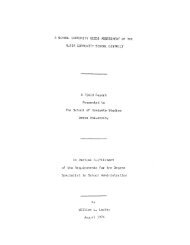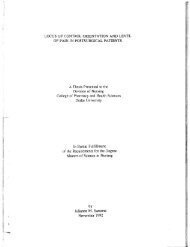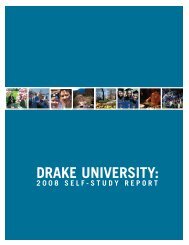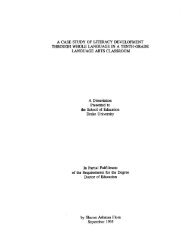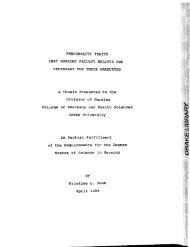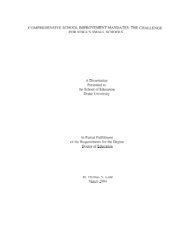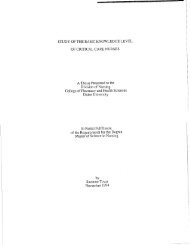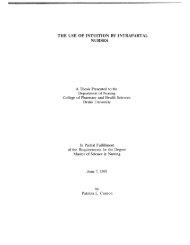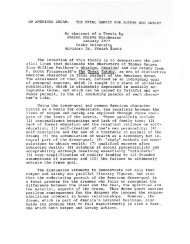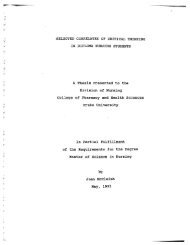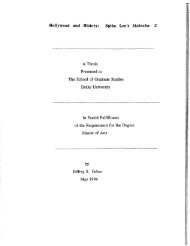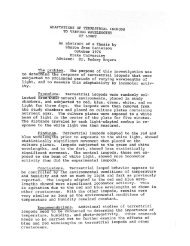LEADERSHIP CHARACTERISTICS OF ... - Drake University
LEADERSHIP CHARACTERISTICS OF ... - Drake University
LEADERSHIP CHARACTERISTICS OF ... - Drake University
You also want an ePaper? Increase the reach of your titles
YUMPU automatically turns print PDFs into web optimized ePapers that Google loves.
Transactional LeadershipTheory<br />
By the late 1970s and early 1980s, leadership theories began to<br />
move away from the specific viewpoints of the leader, follower, and the<br />
leadership context and toward processes that centered more on the<br />
interactions between the leaders and followers. Transactional leadership<br />
was described as that in which leader-follower relationships were based<br />
on a series of exchanges or bargains between leaders and followers<br />
(Bums, 1978).<br />
Transactional theory was "based on reciprocity where leaders not<br />
only influence followers but are under their influence as well" (Heifetz,<br />
1994, p. 17). Other research suggested that transactional leadership<br />
varies with respect to the leader's activity level and the nature of the<br />
interaction with the followers (Bass, 1990). Hater and Bass (1 988) viewed<br />
transactional leadership as a type of contingent-reward leadership that<br />
had active and positive exchange between leaders and followers whereby<br />
followers were rewarded or recognized for accomplishing agreed upon<br />
objectives. These rewards might involve recognition from the leader for<br />
work accomplished, bonuses, or merit increases. Positive reinforcement<br />
could be exchanged for good work, merit pay for increased performance,<br />
or promotions and collegiality for cooperation (Sergiovanni, 1990).<br />
Leaders could instead focus on mistakes, delay decisions, or avoid<br />
responses. This approach is referred to as "management-by-exception"



